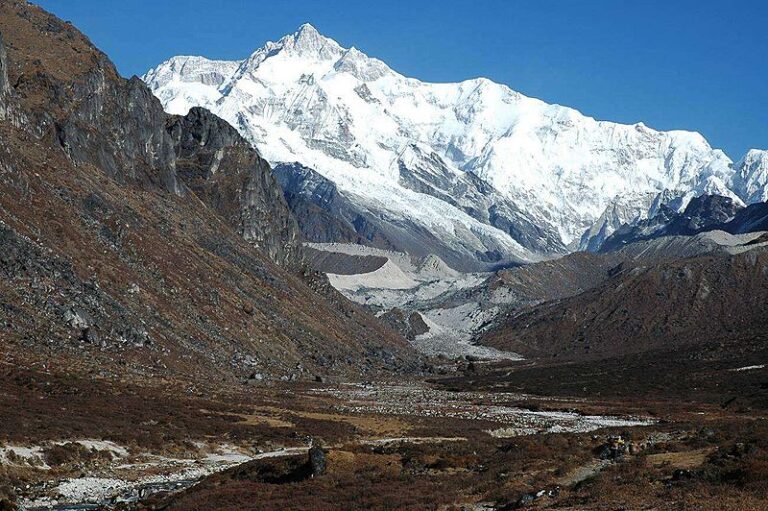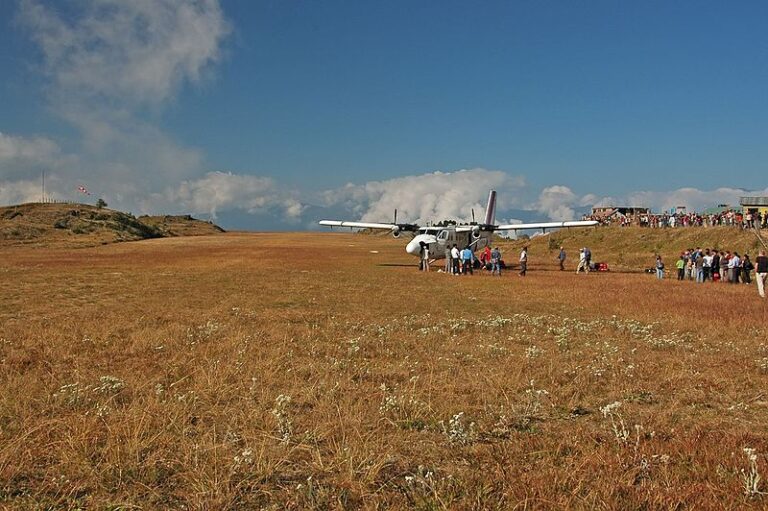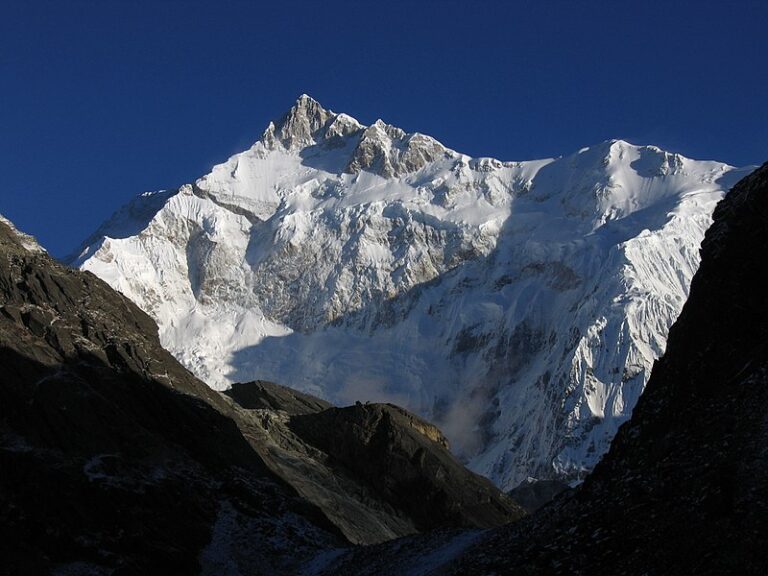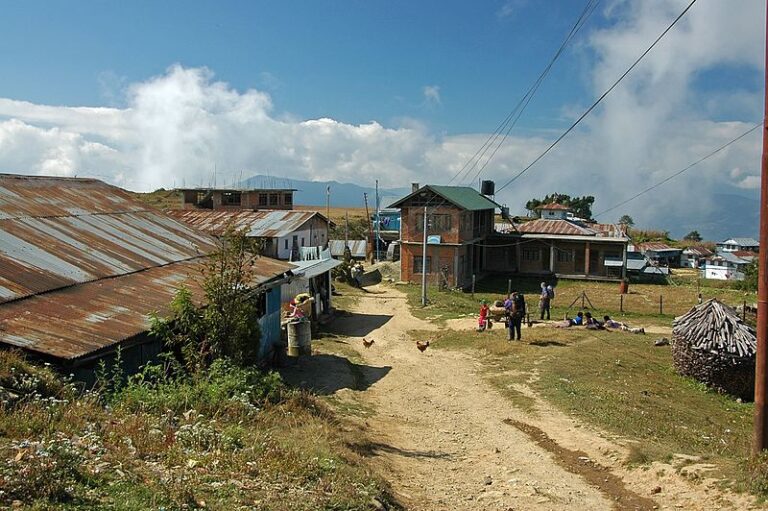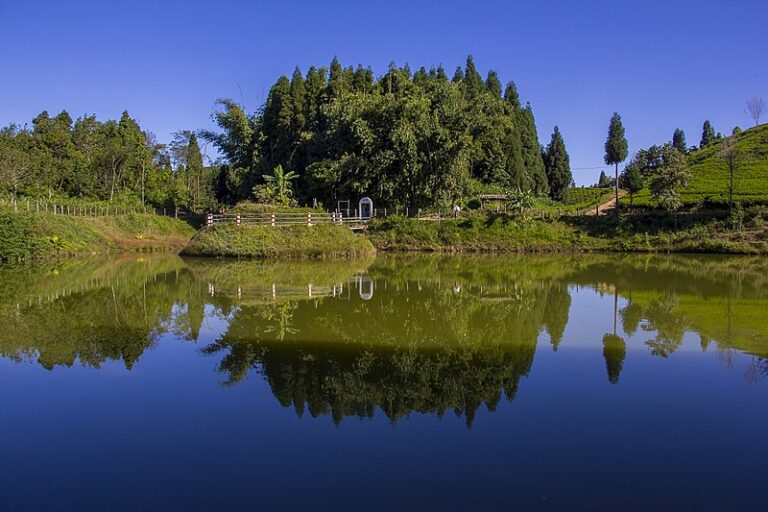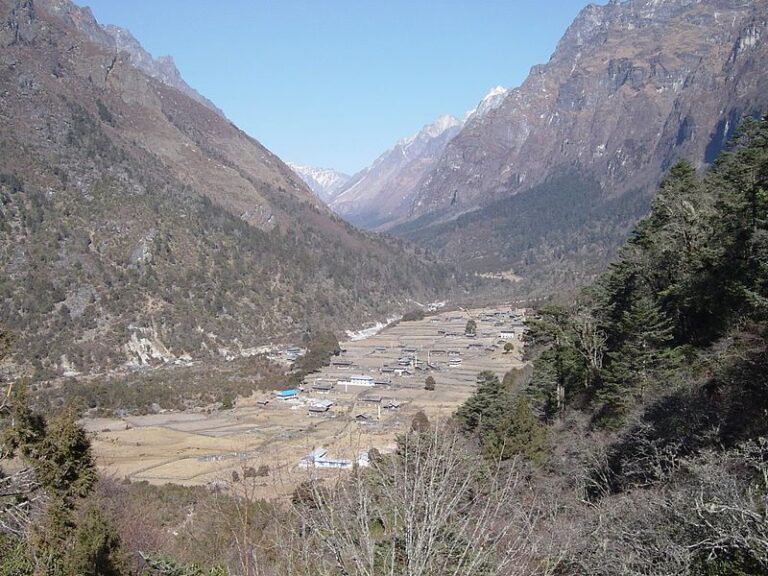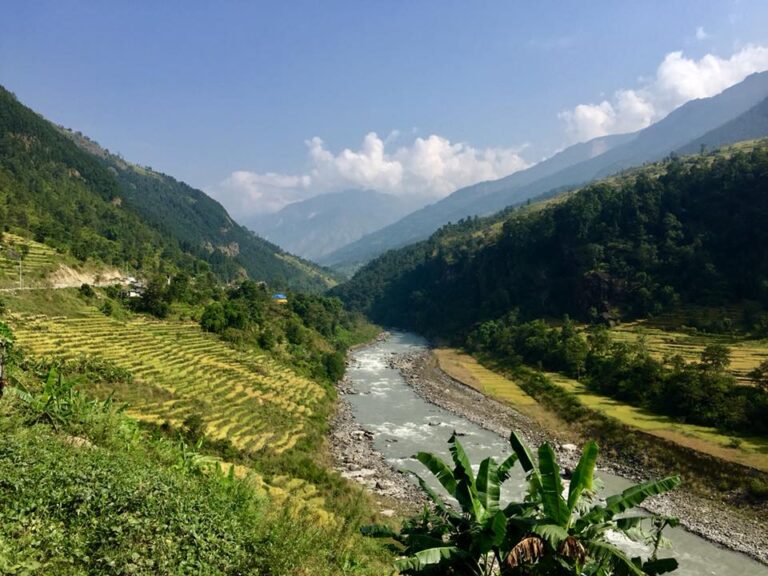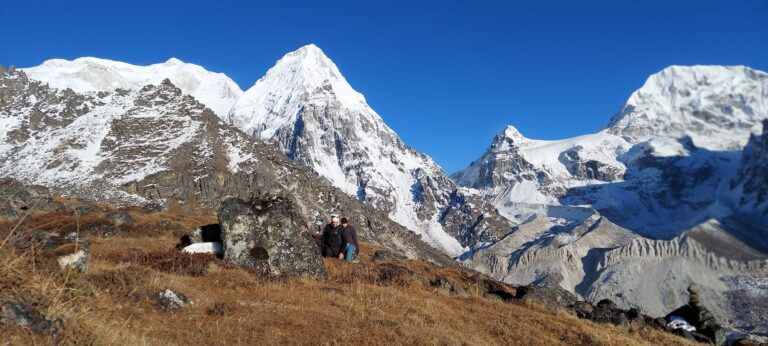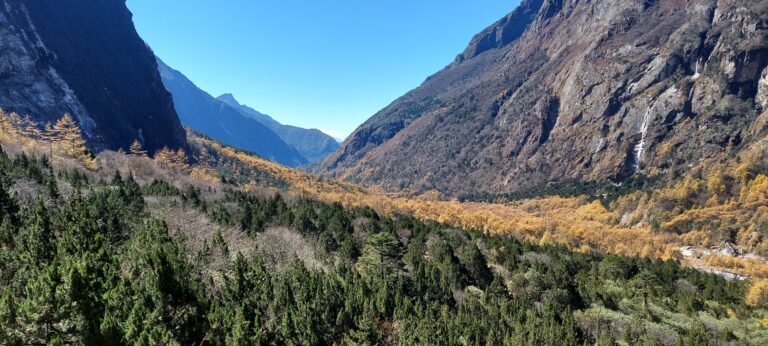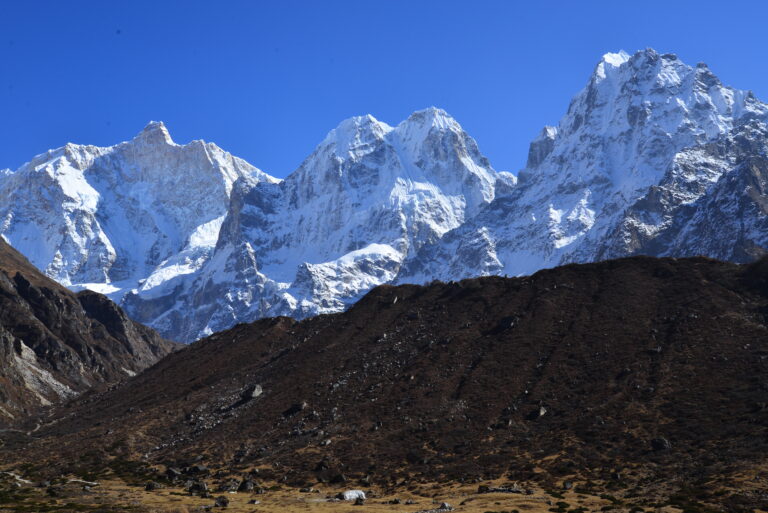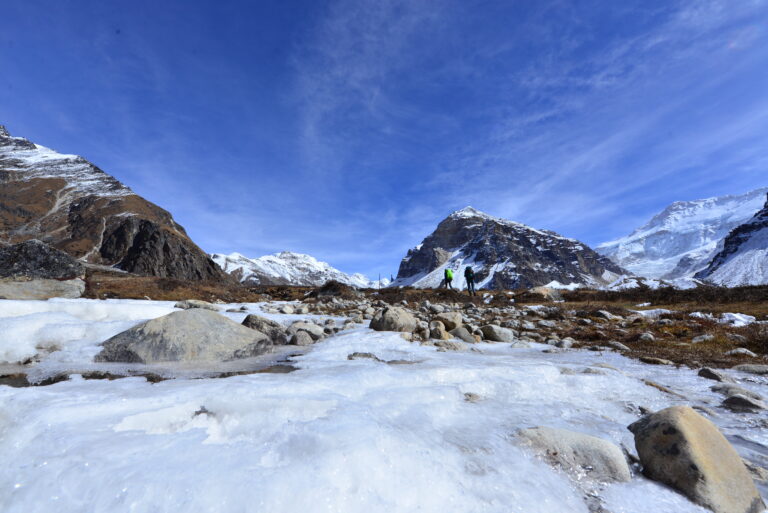Day 01 – Arrival and escort to Hotel – On your arrival date in Kathmandu, we will pick you up from the Tribhuwan international airport and escort to hotel. Your hotel will locate just the center of the Thamel, which is one of the tourist hubs of Kathmandu city.
Day 02 – Exploration of Kathmandu city – We will explore some of the historical and religious places of Kathmandu like Pashupatinath temple, Baudhanath Stupa, Swayambhunath stupa, and Patan Durbar square, which are listed as world heritage sites by UNESCO. After exploration of these sites, we will return back to the hotel and the guide will brief us about trekking gears, trekking routes, and other related topics.
Day 03 – Fly to Bhadrapur and drive to kanyam 1627m) – The flight takes 45 minutes to get to Bhadrapur which is a small town of the Terai region of Nepal and the Budhha airlines and Yeti Airlines have daily flight schedules. when you will land in Bhadrapur, you have to drive about two hours to get to Kanyam which is a beautiful place of the Ilam district that commands you to see a beautiful view of the tea garden.
Day 04 – Drive to Taplejung (1820ma.s.l) – 7 to 8 hours drive – we will drive approximately 7 to 8 hours to get Suketar but still depend on the vehicles. Along the trail, you will have a fascinating view of the terraced field, green hills and river valleys.
Day 05 – Trek to Chirwa village (1270m.a.s.l) – 5 hours walks – Begins of the trek we will follow the tractor road for thirty minutes then the trail ascends on steps over a bluff for 90 minutes then the trail gently descends to the Sinwa village with pleasing view of rocky hills, green landscapes and river valleys. From Sinwa village, we will head towards Chirwa or Chiruwa village pass by small village known as Tawa, Thiwa and Nagadin to get Chirwa village, which is a pretty thatched village and offers to see wild Tamor river valley and two small peaks called Pathibhara peak 3795m and Neghung 3810 meters high (can be seen only in snowy season.
Day 06 – Trek to Amjilosa (2510m.a.s.l) – 6 hours walks – Today we have to ascend about 1300 meters to get Amjilosa village but still hike would be very pleasant due to climb gradually with delightful views of several swing bridges, cardamom groves, Tamor river and Ghunsa river which is draining from the Kanchenjunga and Kumbha Karna glaciers and the major tributary of Tamor river. We will pass Tapethok, Phembu, Tamewa, Lelep, and Sekhathum villages before approach to Amjilosa; which are inhabitant by Tibetan peoples and several ethnic castes of Nepal known as Bhotia, Limbu, Kiratis and Brahmans. Lelep village is headquarters of Kanchenjunga conservation area project where we must show our trekking permits to get grand permission for Kanchenjunga trek. There are half dozens of basic guesthouses in Amjilosa village which are never close even in the winter season.
Day 07 – Trek to Ghunsa village (3595m.a.s.l) – 7 hours walk – We will head towards Ghunsa village pass by nasty and wet gully villages called Gyabla and Phale. The pleasant day offers to see several cascading waterfalls, swing and wooden bridges, Ghunsa river valley, rugged moraines, gigantic pastureland of blue sheep and yaks, and dense forest of bamboo, juniper and rhododendrons. The area is well known as habitants of black Bears and red Pandas. Ghunsa is a bigger village than others and has good provision shop, electricity and dozens of guesthouses with toilet and shower facilities.
Day 08 – Rest and acclimatization day – It is good idea to spend two nights in Ghunsa village concerning by the high elevation and to skip high altitude sickness. After breakfast, we will head northwest part of Ghunsa village that lead us to Nango-La pass 4820m and offers to see several small Lakes known as Hans pokhari, Tin pokhari, Nag pokhari and massif views of Sharphu peak series. The ascended trail never end so when we feel tired and enough hiking then we will return back to Ghunsa to spend another joyful night.
Day 09 – Trek to Khangpachen (4145m.a.s.l) – 4 hours walk – The pleasant walks lead us to Khangpachen or Kambachen through larch, rhododendron, and silver pine and juniper cedar forest with charming views of landscapes, Khangpachen river, river valley and as well as striking view of Janu Himal 7711 meters high. We have to pay big attention to safe from falling rocks, crossing landslides; icy trail and yaks are coming down or going up with huge load. After lunch in Khangpachen, we will hike up to a viewpoint where can be seen a sacred place with prayer flags, bells and tridents magnificent views of Janu himal and its neighbors.
Day 10 – Trek to Lhonak (4792m.a.s.l) – 4 hours walks – Today we have to climb up about 650 meters to get Lhonak which is almost double ascends of standard climb at high elevation so requires to walk slow and plenty of drinks. The trail ascends pass by Chortens above the Khangpachen then steadily on the right bank with beautiful icy rocky peaks and big area of Sea-buckthorn, icy trail, frozen streams and avalanches area so we have to be very careful to safe from falling rocks, especially while crossing the frozen streams and icy trail. There are half dozens of stone huts and tents to spend cold night and the owner provides Dall-Bhat for the trekkers and their trekking crews.
Day 11 – Sight trip to Kanchenjungha base camp and return back to Lhonak – 6 hours walks – There is only one stone hut in Pang Pema and even open only main season so we have to carry some eatable things and hot drinks. Sight trip to Pang Pema offers to see some wildlife such as blue sheep, Himalayan Pika (rock rabbit) Himalayan snow partridge and stunning views of Kanchenjunga, wedge peak, Drohma peak and its neighbor peaks and glacier. After exploration of this beautiful place we will return back to Lhonak again via same trail and views.
Day 12 – Trek to Ghunsa (3595m.a.s.l) – 8 hours walk – Today we will drop about 1300 meters to get Ghunsa village pass by Ramtang and Khangpachen villages with charm views of deep valley, rugged rocky hills and dozens of snowcapped peaks known as Sharphu, Khabur, Phole peak, Ghunshadhar and its beautiful ranges. Already we know that there are dozens of guesthouses in Ghunsa village to spend a joyful night.
Day 13 – Trek to Selele camp (4130m.a.s.l) – 4 hours walk – Begins of trek we will climb up about 400 meters to get a top of the hill called Tamola pass 3940 meters that offer to see beautiful mountain views, landscapes and deep valley. From the top of the Tamola pass the trail lead us to Selele camp through the sunny meadow, ridge with rhododendron trees, pastureland covered by juniper and larch. There is only one basic guesthouse in Selele camp where 12 to 15 trekkers can get basic bed and Dall-Bhat.
Day 14 – Trek to Cheram (3870m.a.s.l) – 5 hours walks – Today we have to cross three small passes called Sinion-La 44120m, Miring-La 4480m and Sinelapche-La pass 4650 meters which are not only passes but also the viewpoints to see beautiful views of Janu Himal 7711m, Kabru 7353m, Rathong 6679m, Kokthang 6147m, Khangla kang 5561m, spectacular view of Yalung glacier and including two top ten mountains of the world called Makalu 8485m and Everest 8848 meters. Most of the times we will do often up and down through the rugged moraines, crossing small streams, deep river gorge with delightful views of rocky hills and some of blue lakes and cascading small waterfalls. There are half dozens of basic guesthouses and extra tents in Cheram village for trekkers.
Day 15 – Trek to Ramche (4610m.a.s.l) and return back to Cheram – 6 hours walks – Ramchaur or Ramche would be very crowded in main season so we have to be clear that about the room or tent before leaving from Cheram because there is only one basic guesthouse is available with capacity of maximum 16 to 20 people. However, it is possible to do a round trip, which can be easily done in 5 hours. The sight trip to Ramchaur and Oktang offers to see gigantic pastureland, clear streams, beautiful series of open ablation valleys, moraines, Lakes, grazing blue sheep, Yaks, forest of rhododendron and juniper and stunning snowcapped peaks called series of Kabru, Kokthang, Rathong and its neighbor.
Day 16 – Trek to Tortong (2980m.a.s.l) – 4 hours walks – we will descend about 900 meters to get Tortong from the Cheram village but still it would be very pleasant and memorable hike of the trip due to walk through the forested trail with charm views of river valley, roaring sounds of river, cascading waterfalls, Buddhist and Hindu shrines, Anda Lake and gigantic pastureland where can be seen thousands of grazing yaks, mountain goats and sheep. There are half dozens of guesthouses in Tortong village and good provision shop and even electricity.
Day 17 – Trek to yamphudin (2015m.a.s.l) – 7 hours walks – Begins of trek, we will cross Simbuwa river on a bridge, traverse and ascend through old forest and zigzag trail to get Lasiya Bhanjyang that offers to see splendid vie of Janu Himal 7711m to the northeast and charming views of grazing yaks, terraced field, growing vegetables, cardamom groves and local peoples who are working in the farm. Then the trail often descends and ascends via narrow track pass by Amji Khola, Chitre, Yamphudin and Dhupi Bhanjyang to get Sherpagaun. Most of the map doesn’t show the Sherpagaun and some map show it as upper Yamphudin but it is beautiful and more picturesque place than other villages and has more comfortable guesthouses.
Day 18 – Trek to Phumpe Danda (1860m.a.s.l) – 5 hours walk – Begins of the trek the trail passes through the grassy cliff at length with an exposed narrow and slippery trail so we have to be very careful while crossing grassy cliffs and going downhill path. After two and half hours walk in the forested trail appear a beautiful village called Mamangkhe, which is inhabitant by the Limbu people and provides delicious Dall-Bhat with great hospitality. There are half dozens of good guesthouses in Mamangkhe and Phung-Phung danda to spend joyful night.
Day 19 – Trek to Simbu (1707m.a.s.l) – 6 hours walk – The pleasant track passes through dense forest, cardamom gardens, terraced field and crossing by some viewpoints that offer to see excellent view of Janu Himal 7711m and charming green landscape. We will have our lunch in Chiruwa village then trek continuously trek to Simbu pass by some hamlets called Kande Bhanjyang, Sinchebu, Sinchewa Bhanjyang and Kunjari villages, which are very prosperous hamlets can be seen growing vegetables, wheat, rice, maize, millets and cardamoms. There are half dozens of basic guesthouses in Simbu and provides twins bedrooms and organic meals grown own their farms.
Day 20 – Trek to Suketar (2420m.a.s.l) – 4 hours walk – we will head towards Suketar pass by Tambewa, Deurali Bhanjyang, Lali kharka and Deurali village to get Suketar. Most of the time we will walk on the gravel road and often up and downhill trail, through the cultivated land so major attractions of the day would be the views of terraced field, green forest and seasonable harvest might be maize, wheat, rice, millets and vegetables. There are dozens of good guesthouses in Suketar to celebrate the last night of the Kanchenjunga trek.
Day 21 – Fly from Suketar to Bhadrapur- Kathmandu and escort to hotel – Early in the morning we will fly to Bhadrapur with incredible views of Kanchenjunga, Makalu, Langtang Himal, Annapurna, Gaurishankar and Everest mountain ranges from the window of plane. After landing in Kathmandu airport, we will transfer to hotel to take deep rest and relax from good hotel.
Day 22 – Final departure – After a successful trip of the Kanchenjunga trek, you will fly back to your home with a great outdoor experience and many tales about Nepal, colorful Nepali people, their culture, and traditions that make you a storyteller among your friends and colleagues.
